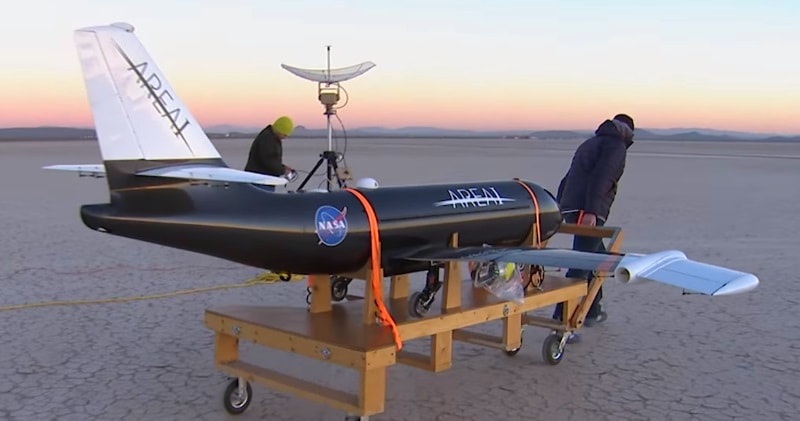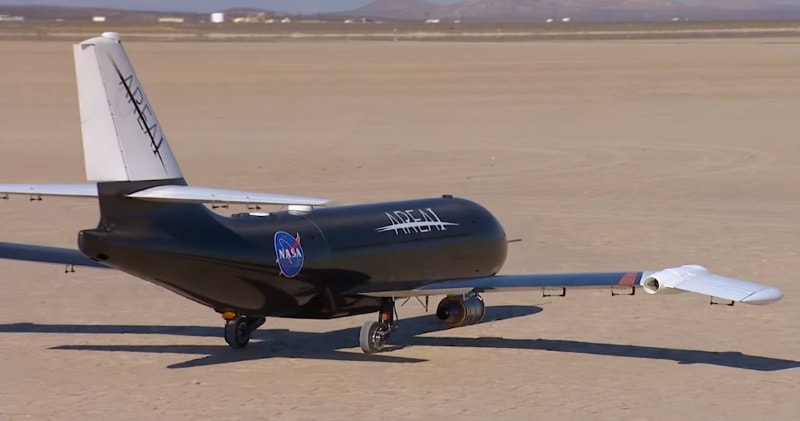NASA conducts a flight test series to investigate the ability of an innovative technology to fold the outer portions of wings in flight as part of the Spanwise Adaptive Wing project, or SAW.
source/image: NASA.A.F.R.C
Flight tests took place at NASA Armstrong Flight Research Center in California, using an autonomous subscale UAV called Prototype Technology-Evaluation Research Aircraft, or PTERA, provided by Area-I.
source/image: NASA.A.F.R.C
NASA Glenn Research Center in Cleveland developed the alloy material, and worked with Boeing Research & Technology to integrate the material into an actuator. The alloy is triggered by temperature to move the outer portions of wings up or down in flight.
Advertisement
The ability to fold wings to the ideal position of various flight conditions may produce several aerodynamic benefits for both subsonic and supersonic aircraft.
On subsonic aircraft, such as commercial airliners, the potential aerodynamic benefit of folding the wings includes increased controllability, which may result in a reduced dependency on heavier parts of the aircraft, including the tail rudder. This may result in a more fuel-efficient aircraft, as well as the ability for future long-winged aircraft to taxi in airports.












